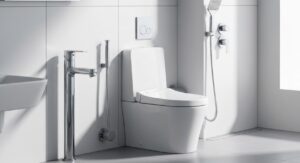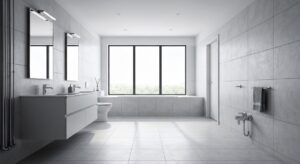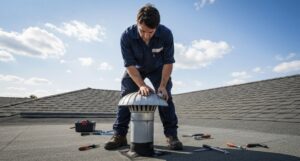No one enjoys watching water pool and linger in the sink after use. A slow-draining sink is a common household hassle, turning simple tasks into frustrating chores. Whether you’re dealing with a kitchen sink overwhelmed by grease or a bathroom sink choked by hair, a slow drain can signal underlying issues. Understanding what causes your sink drain to slow down, and how to restore steady water flow, will help you keep your sinks in top shape and your day running smoothly.
7 Surprising Reasons for Your Slow-Draining Sink Issues
Sometimes, a slow draining sink isn’t just a minor annoyance—it’s a warning of hidden troubles inside your drainpipe. While food scraps and hair are the usual suspects, a variety of surprising factors may disrupt water flow and lead to stubborn drain clogs. The best way to tackle these issues begins with knowing what’s happening inside your fixtures. But how do you distinguish a typical clog from a venting issue? By recognizing unique symptoms and learning what to look for, you can choose the right fix for your slow sink.
Let’s explore the seven unexpected causes behind your slow draining sink and how to address each, from kitchen grease to blocked plumbing vents and more.
1. Buildup of Soap Scum and Grease
In many homes, soap scum and grease quietly line the walls of your drain pipe, especially in the kitchen sink. These sticky residues harden over time and trap other debris, steadily slowing your water flow. As you wash dishes or hands, bits of soap and cooking fats cling to the inside of the pipe, creating a stubborn layer that resists rinsing.
If you want to unclog a slow draining sink without harsh chemicals, consider using a mixture of hot water and baking soda. This natural duo helps dissolve sticky deposits. Simply pour a half cup of baking soda down the drain, followed by boiling water, and allow it to work its magic.
Consistent cleaning is the best way to keep scum and grease at bay. Regular flushes not only clear existing gunk but also prevent new clogs from forming and keep your sink running smoothly.
2. Hair and Debris Blocking the Drain
Hair and small bits of debris are notorious for clogging sink drains, particularly in the bathroom. Over days and weeks, strands of hair bind with soap, toothpaste, and other particles to create small clogs that slowly choke your sink’s water flow. If you notice slow draining or standing water, hair is likely the culprit beneath the stopper.
You don’t always need a fancy tool to clear minor clogs. Common household items, such as a wire hanger bent into a hook or a drain snake, can help pull out troublesome tangles. A drain zip tool is also effective for snaring hair and extracting it from your sink drain.
Prevention is as important as removal. Regularly removing hair from the stopper and using a fine-mesh drain cover will keep your bathroom sink free of persistent slowdowns.
3. Mineral Deposits From Hard Water
If your home has hard water, mineral deposits are an invisible threat to your sink drain. Over time, minerals like calcium and magnesium crystallize inside pipes, narrowing the passage and leaving a crusty residue that leads to slow draining. You might notice white, chalky buildup around the sink or inside the drain.
DIY methods work well on these stubborn deposits. For instance, pour baking soda down the drain, followed with white vinegar. The fizzing action helps break down minerals and flushes residue away naturally. This solution is especially effective for kitchen and bathroom sinks affected by hard water.
Regular treatments using this baking soda and vinegar technique can be the best way to maintain clear pipes. Not only will your drains flow better, but you’ll also avoid the need for harsh chemical cleaners.
4. Faulty or Clogged Sink Stopper
Sink stoppers, designed to trap debris, can themselves become sources of gunk and slow draining. Over time, hair, soap, and other particles build up around the drain stopper, blocking water flow and creating a hidden clog that isn’t always visible from above.
To check if your stopper is the issue, remove it and inspect for collected debris. Sometimes, you’ll need a wrench to loosen the nut under the basin holding the stopper in place. Clean off any residue, rinse thoroughly with hot water, and replace the stopper.
Wondering whether it’s a clog or a venting issue causing the slow draining? If removing and cleaning the stopper speeds up the water, you’ve found the culprit. If not, further inspection of the drainpipe or plumbing vents may be needed.
5. Obstructed P-Trap or Drain Pipe
The P-Trap, that curved section of pipe beneath your sink, is a common spot for blockages. Food bits, hair, and gunk settle in the bend, eventually slowing the drain until water pools in the basin. If flushing with hot water or using a zip tool doesn’t work, the blockage may be hidden here.
To clear a P-Trap, place a bucket underneath to catch water, loosen the slip nuts by hand or with a wrench, and remove the pipe. You’ll likely find a buildup of residue and debris. Clean the pipe thoroughly before reinstalling it.
If you repeatedly experience slow draining, even after cleaning the P-Trap, or see water overflowing from multiple fixtures, it’s time to call a plumber. Persistent or complex clogs might signal deeper issues in your drainpipe system.
6. Poor Ventilation or Blocked Plumbing Vents
Blocked plumbing vents can be a less obvious but equally troublesome cause of slow drainage. Plumbing vents allow air to flow into the drain system, ensuring water moves smoothly down the pipes. When vents are blocked, perhaps by debris or pests, pressure changes slow drainage significantly.
Signs of a venting issue often include gurgling sounds or water rising in one fixture when another is used. To check for this problem, look at the overflow hole—if water drains slowly and cleaning the pipe doesn’t solve it, the vent may be blocked.
If you’re unsure whether your slow draining sink is due to a clog or venting issue, keep in mind: persistent problems affecting multiple fixtures often point to ventilation trouble. In such cases, professional help may be required to restore proper air flow in your plumbing.
7. Hidden Issues With Sewer Line or Main Drain
Occasionally, the cause of your slow draining sink lies beyond the immediate fixtures. Problems in the main drain or sewer line—such as tree roots, heavy blockages, or pipe damage—can restrict water flow throughout your home. You may notice slow drainage in several sinks, toilets, or showers at once.
When these hidden issues strike, DIY fixes aren’t enough. Watch for warning signs: slow draining in several locations, water backing up, or foul odors that suggest a sewer line problem. Overflowing water or dampness around your plumbing are also red flags.
If any of these symptoms occur, don’t hesitate to contact a professional plumber. Only an expert can diagnose and repair main drain or sewer line problems, which require specialized tools and experience to fix safely.
DIY Methods to Tackle a Slow-Draining Sink
Facing a slow draining sink doesn’t always mean you need to call a plumber right away. Several DIY methods can restore water flow and clear drain clogs using common household items. From using baking soda and hot water to the clever use of a drain zip tool or wire hanger, homeowners have a range of techniques at their disposal.
Let’s look at some of the most effective ways to tackle slow drainage and achieve the best results for your kitchen sink or bathroom sink.
Use Boiling Water and Baking Soda Solution
One of the simplest solutions for minor drain clogs is a combination of hot water and baking soda. This method works best for breaking up grease, soap scum, and other soft residues without damaging your pipes.
Here’s how you can try it at home:
- Boil a large pot of water and carefully pour it directly into the slow draining sink.
- Add about half a cup of baking soda into the drain, allowing it to sit for ten minutes.
- Pour another round of boiling water down the drain to clear loosened debris.
If you want even more cleaning power, follow the baking soda with a cup of vinegar before the final rinse of boiling water. This method is gentle on pipes and effective for small clogs or regular maintenance.
Try a Vinegar and Baking Soda Flush
Combining white vinegar and baking soda creates a fizzing reaction that’s excellent for cleaning out drain clogs. This approach is ideal for dislodging stubborn buildup without resorting to chemical drain cleaners.
To use this natural method:
- Pour a tablespoon of table salt into the sink drain, followed by half a cup of baking soda.
- Add one cup of white vinegar and quickly cover the drain with a stopper or cloth to contain the fizz.
- Let the solution work for about an hour, then flush with hot water for best results.
This technique not only clears slow drains but also helps neutralize odors. It’s a safe, eco-friendly option that keeps your sink and pipes in good condition.
Utilize a Drain Zip Tool or Wire Hanger
For clogs caused by hair or stubborn gunk, nothing beats a drain zip tool or a homemade wire hanger hook. These tools physically remove debris and are especially useful for bathroom sinks.
Here’s how to use them:
- Insert the drain zip tool or bent wire hanger into the drainpipe, angling to catch hair or residue stuck inside.
- Wiggle and twist the tool to snag as much gunk as possible, then slowly pull it out to remove the blockage.
- Repeat until the sink drains freely, discarding debris after each try.
A drain zip tool, with its barbs, is designed to grab and pull out obstructions efficiently. Regular use can help prevent major clogs and keep your sink running at its best.
When to Seek Professional Plumbing Help
Certain warning signs mean it’s time to put down the DIY tools and call a professional. Persistent slow draining, even after multiple attempts with drain cleaners, augers, or plungers, signals a stubborn clog or deeper issue.
Watch for these red flags:
- Water drains slowly from several fixtures at the same time.
- You hear gurgling, bubbling, or smell foul odors from the drain.
- There’s visible overflow or repeated water backup in sinks, showers, or tubs.
If you’ve used a drain auger or chemical cleaners without success, further attempts may worsen the problem or damage your pipes. Jamie Kunz, President of Mr. Rooter Plumbing, warns, “Slow-moving drains can cause major issues, including water damage and pest infestations.”
When these signs appear, it’s best to let a plumber assess and resolve the problem safely.
How We at Target Plumbers Diagnose Complex Drain Issues
At Target Plumbers, our diagnosis of a slow sink drain goes beyond surface fixes. Our step-by-step process identifies the true cause, whether it’s a clogged drainpipe, blocked vent, or main sewer problem. Here’s how we approach complex plumbing issues:
| Diagnostic Step | What We Check For |
|---|---|
| Visual Inspection | Visible clogs, leaks, or standing water in fixtures. |
| Water Supply Test | Flow rate and pressure in kitchen and bathroom sinks. |
| Drainpipe Assessment | Use of camera equipment to inspect for hidden blockages. |
| Vent Testing | Evaluation of airflow through plumbing vents and overflows |
| Fixture Isolation | Testing individual fixtures for isolated or shared issues. |
This thorough process ensures we identify all underlying causes and recommend the best way to restore smooth drainage.
Conclusion
In conclusion, understanding the various reasons behind a slow-draining sink can save you time, frustration, and costly plumbing bills. From soap scum buildup and hair blockages to mineral deposits and hidden sewer line issues, identifying the root cause is essential for effective resolution. Employing DIY methods can provide temporary relief, but knowing when to call in a professional is equally important to prevent further damage. By staying informed and proactive about your plumbing, you can ensure smooth drainage and maintain a functional sink.
Slow drains are just one of several nuisances covered in our detailed blog, Low Water Pressure? Here’s What Might Be Causing It. Visit the main article to learn more.
Frequently Asked Questions
How can I tell if my slow-draining sink is caused by a clog or a venting issue?
A clog usually limits drainage in just one sink and is fixed by cleaning the drain or stopper. A venting issue often affects multiple fixtures and may cause gurgling or slow draining at the overflow hole. Persistent problems point to plumbing vent concerns.
What common household items work best for clearing a slow sink drain?
Baking soda, vinegar, and hot water are top choices for tackling slow drains. A cup of vinegar combined with baking soda creates a natural fizzing action, while a drain snake or straightened wire hanger can physically remove stubborn debris from the drainpipe.
Is it safe to use chemical drain cleaners for slow-draining sinks?
While chemical drain cleaners can clear some slow drains, frequent use may damage porcelain, leave residue in the drain pipe, or harm plumbing over time. Opt for safer alternatives like baking soda and vinegar, or call a plumber for persistent drain clogs.






